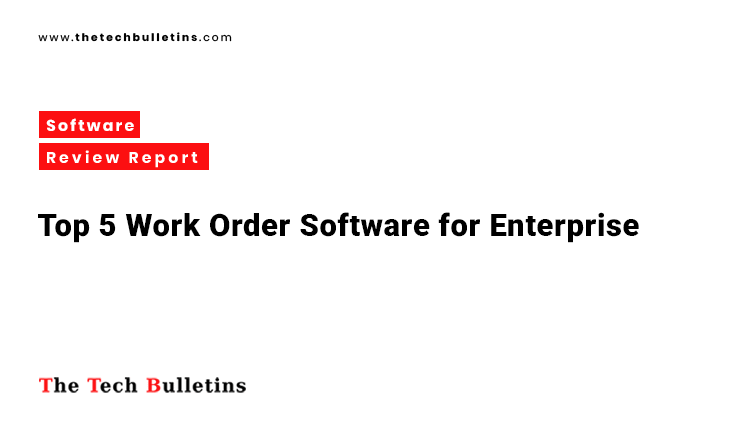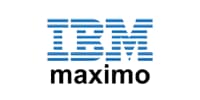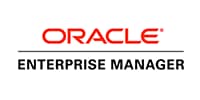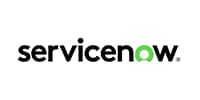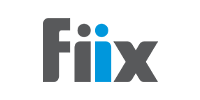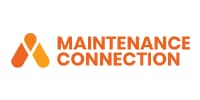Introduction
For large enterprises, work order software isn’t just a utility—it’s mission-critical. Managing thousands of assets, coordinating across multiple sites/geographies, integrating with big ERP/IoT/data pipelines, and ensuring regulatory compliance all demand enterprise-grade capabilities. Choosing the right solution means balancing power, flexibility, integration, and cost. The challenge: many enterprise solutions are feature-rich but heavy, complex, or very expensive. This review focuses on major enterprise work order / enterprise asset management (EAM) systems, comparing them on usability, integrations, scalability, pricing, and what customers are saying.
Methodology
The evaluation here looks at enterprise work order tools using these criteria:
- Ease of Use: How manageable is the UI/UX, how steep is the learning curve, whether field/mobile users can adopt it without excessive training.
- Core Features: Work order lifecycle, preventive & predictive maintenance, asset & inventory tracking, IoT/data & AI support, workflows.
- Integration Capabilities: ERP, IoT/sensors, API/SDK, cloud/on-prem, third-party tools, mobile, authentication, etc.
- Scalability: How the tool handles large numbers of users, many assets, sites, complex compliance needs, customizations.
- Pricing: Whether there are (or can be) entry tiers for enterprise, how much customization/implementation adds, what license types are.
- Customer Feedback: What users say about pros/cons—what works well, what pain points remain.
Top 5 Work Order / EAM Software for Enterprises
Here are five tools widely used by enterprises, each with its own strengths:
1. IBM Maximo Manage (Maximo Application Suite)
Overview
IBM Maximo is a leading EAM platform, designed for large enterprises managing critical infrastructure, manufacturing, utilities, transportation, oil & gas, etc. It handles full asset lifecycle, regulatory compliance, complex work order workflows, and integrates with IoT/AI. Ideal when you have large asset bases, complex predictive maintenance needs, and need strong partner/consulting support.
Key Features
- AI-driven work order intelligence via IBM watsonx to detect patterns and insights.
- Mobile field access through Maximo Mobile with offline capabilities.
- Asset performance management, condition monitoring, predictive analytics.
- Flexible workflows, scheduling, and IoT integrations.
- Custom dashboards, visualization, reporting; on-prem or cloud deployment.
Benchmark Performance
- Ease of Use: Moderate to Strong — powerful but with a steep learning curve.
- Data Integration: Outstanding — built for enterprise IoT, APIs, and ERP integration.
- Visualization: Strong — advanced dashboards and analytics.
- Scalability: Outstanding — supports large-scale, multi-region operations.
Pricing
- Free Plan: No
- Enterprise: Yes — advanced features, custom pricing.
- Free Trial: Proof of concept or demo available.
Customer Reviews
Average Rating: High among EAM users.
Pros: Powerful integrations, predictive capabilities, good mobile support.
Cons: Expensive, complex, requires training.
Customer Quote: “Lots of features, not all that user friendly … it’ll do anything you could want it to do and do it well.”
2. Oracle Enterprise Asset Management (Oracle eAM)
Overview
Oracle eAM, part of Oracle’s ERP suite, offers deep integration for enterprises that need asset/work order management tied to costing, quality, and compliance. Ideal for manufacturing, utilities, and regulated industries.
Key Features
- Work order planning, scheduling, and costing with resource/material management.
- Scheduler Workbench for visualization and Gantt-style task planning.
- Multi-asset and multi-site management with hierarchical asset structures.
- Quality, compliance, and procurement integration.
- Field work requests and sensor-based work generation.
Benchmark Performance
- Ease of Use: Moderate — robust, but complex for new users.
- Data Integration: Strong to Outstanding — integrates deeply with Oracle ERP.
- Visualization: Strong — scheduling and dashboard tools.
- Scalability: Outstanding — designed for large operations.
Pricing
- Free Plan: No
- Enterprise: Yes — custom quotes and license models.
- Free Trial: Demo or proof-of-concept only.
Customer Reviews
Pros: Deep feature set, ERP integration, strong for regulated industries.
Cons: High implementation cost, dated UI, steep learning curve.
Customer Quote: “Scheduling changes via scheduler workbench are powerful but require a lot of setup.”
3. ServiceNow Field Service Management / Work Order Management
Overview
ServiceNow’s FSM module offers comprehensive enterprise-level field and work order management integrated within its ITSM and ESM ecosystem. It excels where multiple departments (facilities, maintenance, HR, customer service) need a unified workflow system.
Key Features
- End-to-end work order lifecycle management and mobile functionality.
- Automated scheduling, resource and crew management.
- Integration Hub for APIs, AI virtual agents, performance analytics.
- Asset and inventory tracking with real-time dashboards.
Benchmark Performance
- Ease of Use: Good — modern, clean UI.
- Data Integration: Outstanding — APIs, ERP, IoT, and external systems.
- Visualization: Strong — dashboards, timeline, scheduling views.
- Scalability: Outstanding — global enterprise-ready.
Pricing
- Free Plan: No
- Enterprise: Yes — custom license tiers.
- Free Trial: Demo/POC only.
Customer Reviews
Pros: Very flexible, cross-departmental capabilities, automation strength.
Cons: Costly, complex setup, risk of over-customization.
Customer Quote: “Work order management from ServiceNow provides real-time updates and integration with field service teams.”
4. Fiix (Rockwell Automation) – Enterprise Tier
Overview
Fiix Enterprise offers a lightweight yet capable alternative to heavyweight EAM systems. It’s cloud-based, easier to deploy, and cost-effective for enterprises seeking agility without massive setup costs.
Key Features
- Failure codes, condition-based maintenance, and multi-site management.
- Purchasing, RFQs, nested preventive schedules, notifications.
- Integration Hub, SSO, audit trails, and configurable workflows.
Benchmark Performance
- Ease of Use: Good to Strong — simpler and modern UI.
- Data Integration: Strong — API and integration hub support.
- Visualization: Good — useful dashboards and reports.
- Scalability: Strong — multi-site/global ready.
Pricing
- Free Plan: Yes (limited features)
- Enterprise: Custom pricing, lower tiers from ~$75/user/month.
- Free Trial: Yes
Customer Reviews
Pros: Easy to implement, modern interface, good value.
Cons: Limited predictive maintenance depth vs Maximo/Oracle.
Customer Quote: “Fiix Foresight and multi-site dashboards are very helpful … fast to deploy.”
5. Maintenance Connection (by Accruent)
Overview
Maintenance Connection is a robust EAM used by enterprises across industries like healthcare, manufacturing, and government. It focuses on reliability, multi-site tracking, and solid reporting.
Key Features
- Real-time work order tracking and custom request forms.
- Inventory and parts management with multi-site visibility.
- Mobile dashboards for productivity and prioritization.
- Work order automation and performance reporting.
Benchmark Performance
- Ease of Use: Good
- Data Integration: Strong
- Visualization: Good — detailed dashboards and reports.
- Scalability: Strong — used across large organizations.
Pricing
- Free Plan: No
- Enterprise: Custom pricing
- Free Trial: Demo available
Customer Reviews
Pros: Reliable, stable, strong customer support.
Cons: UI less modern, fewer advanced AI features.
Customer Quote: “Everyone on the floor can put work orders in without having to call in … very efficient.”
Comparative Analysis Table
| Software | Ease of Use | Data Integration | Visualization | Scalability | Starting Price* |
|---|---|---|---|---|---|
| IBM Maximo Manage | Moderate to Strong | Outstanding | Strong | Outstanding | Custom enterprise pricing |
| Oracle eAM (EBS / Fusion) | Moderate | Strong to Outstanding | Strong | Outstanding | Custom enterprise pricing |
| ServiceNow FSM / Work Order | Good | Outstanding | Strong | Outstanding | Custom pricing (Enterprise License) |
| Fiix (Enterprise Tier) | Good to Strong | Strong | Good | Strong | Enterprise (Custom) / ~$75 per user lower tiers |
| Maintenance Connection | Good | Strong | Good | Strong | Custom enterprise pricing |
* “Starting Price” refers to entry point for moderate-size enterprise tiers; full-scale deployments often use custom licensing and implementation costs.
Recommendations for Enterprises
- For Maximum Asset/Industry Depth: IBM Maximo or Oracle eAM for critical, regulated, or asset-intensive industries.
- For Cross-Department Integration: ServiceNow FSM — ideal for organizations needing unified workflows.
- For Faster Deployment & Lower Ownership Cost: Fiix Enterprise Tier — easier onboarding, affordable scaling.
- For Institutional Reliability: Maintenance Connection — stable, proven performance with strong support.
- For ERP-Centric Enterprises: Oracle or IBM stacks integrate tightly with existing systems.
Conclusion
Enterprise work order and asset management tools bring immense power—but also complexity and cost. IBM Maximo Manage often leads in functionality and scale, followed closely by Oracle eAM for Oracle environments. ServiceNow provides a broad, integrated platform for enterprises managing multiple service types. Fiix offers agility and affordability, while Maintenance Connection remains a dependable, low-risk option.
The ideal choice depends on your existing tech stack, compliance needs, and how quickly you want to deploy. A pilot or proof-of-concept phase is highly recommended before full rollout.
References
- Analyst reports (Technology Evaluation, BetterBuys, TechRadar)
- Vendor product documentation (IBM, Oracle, ServiceNow, Fiix, Maintenance Connection)
- Customer case studies and user feedback from G2, Capterra, and industry forums
